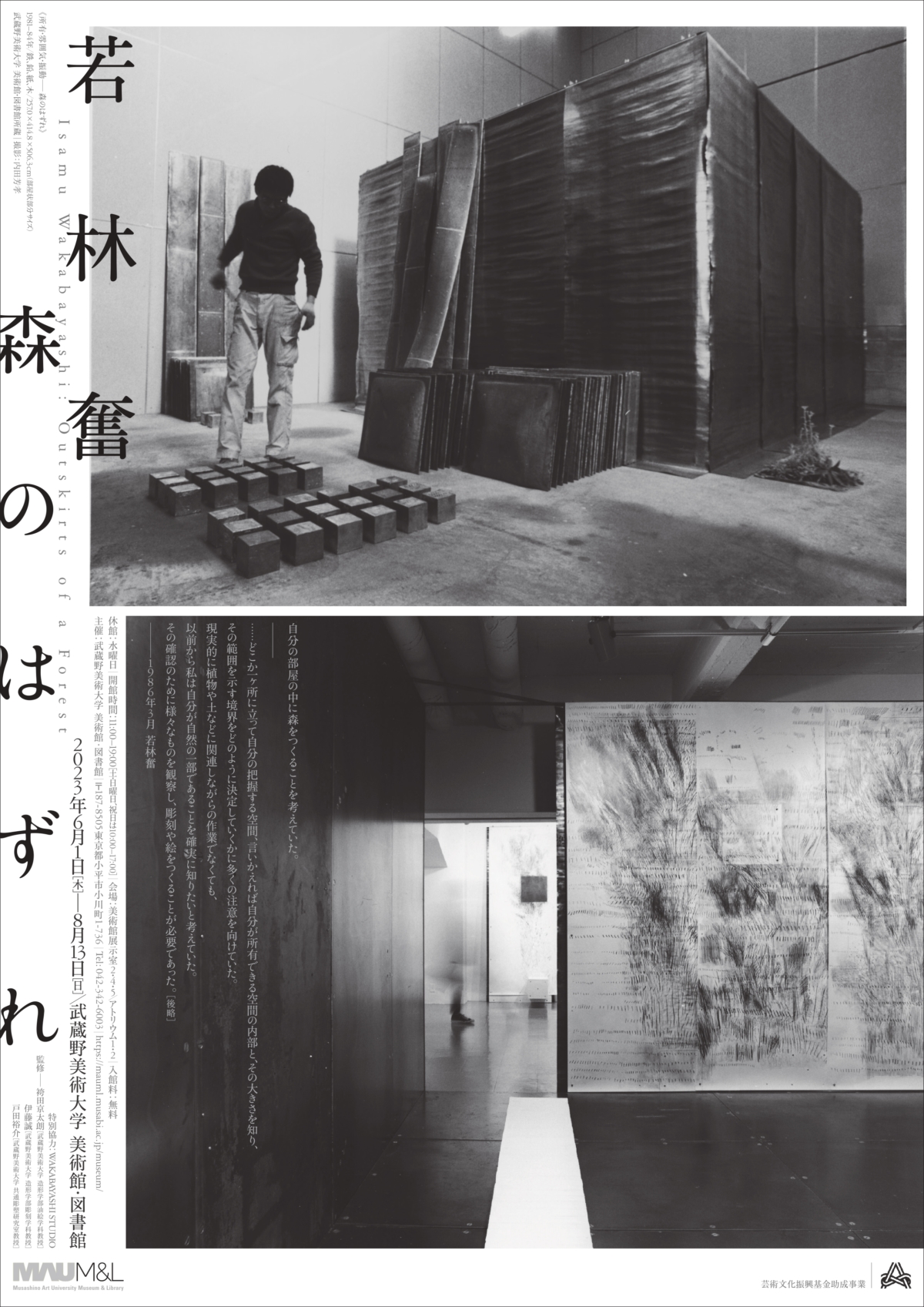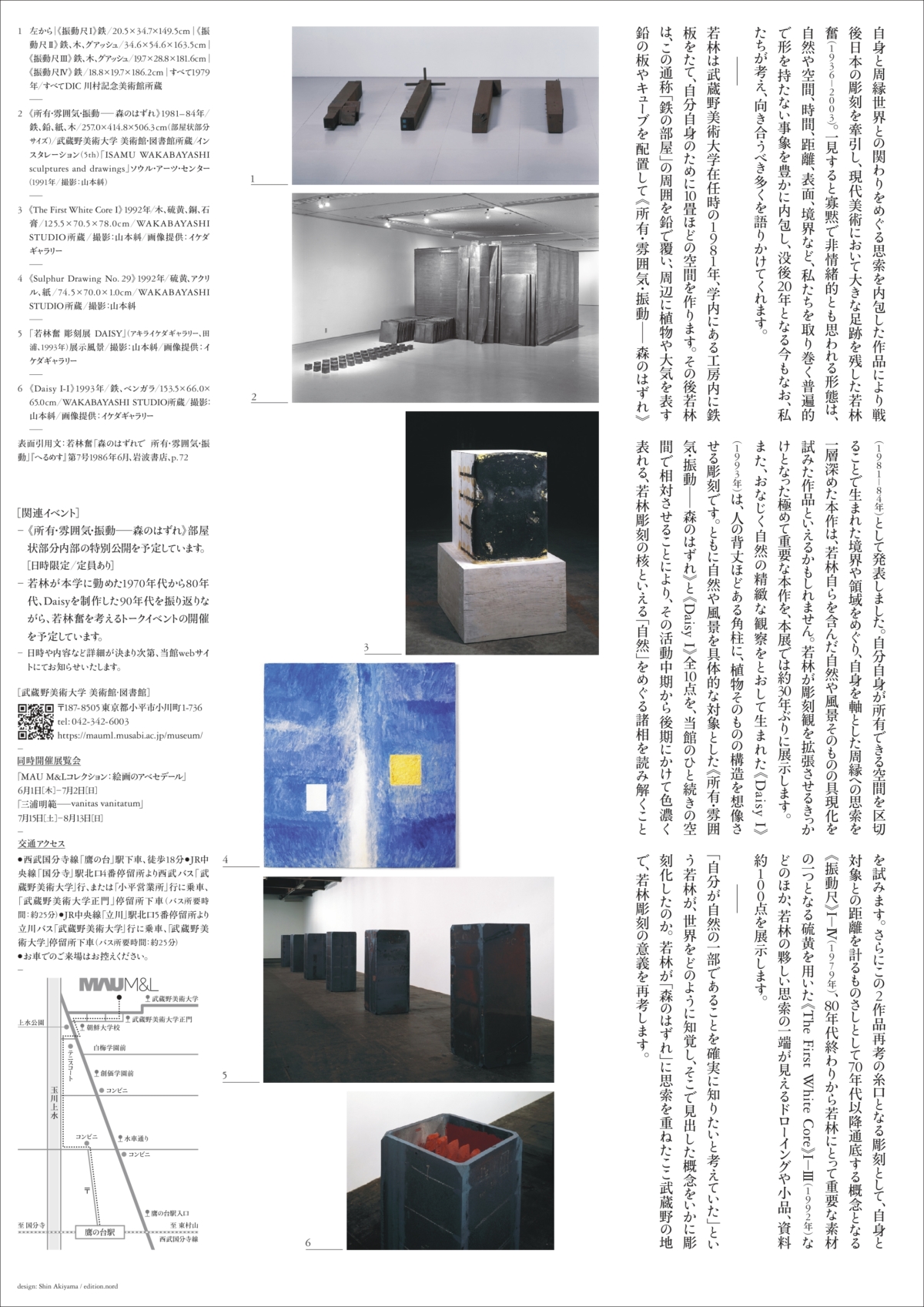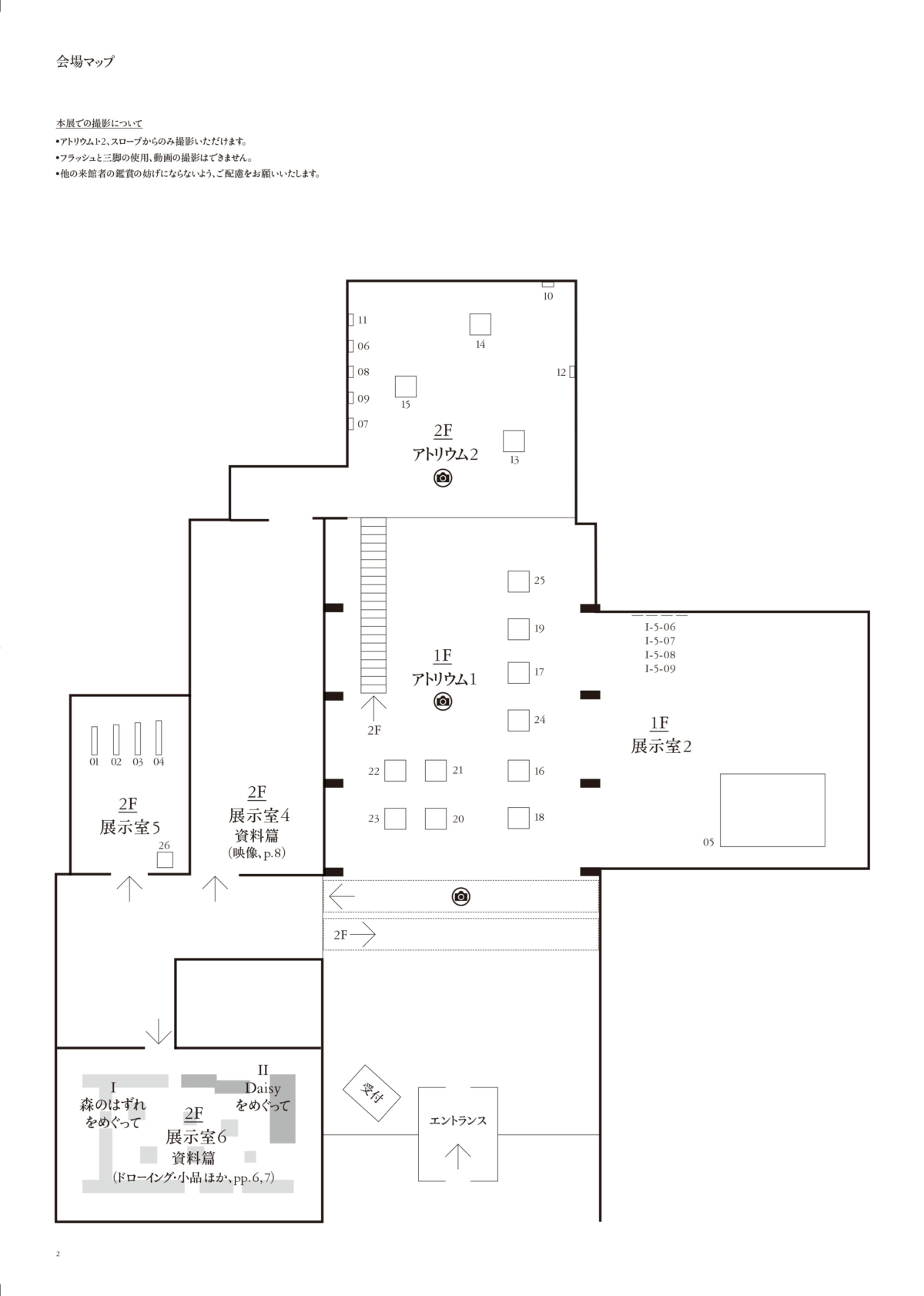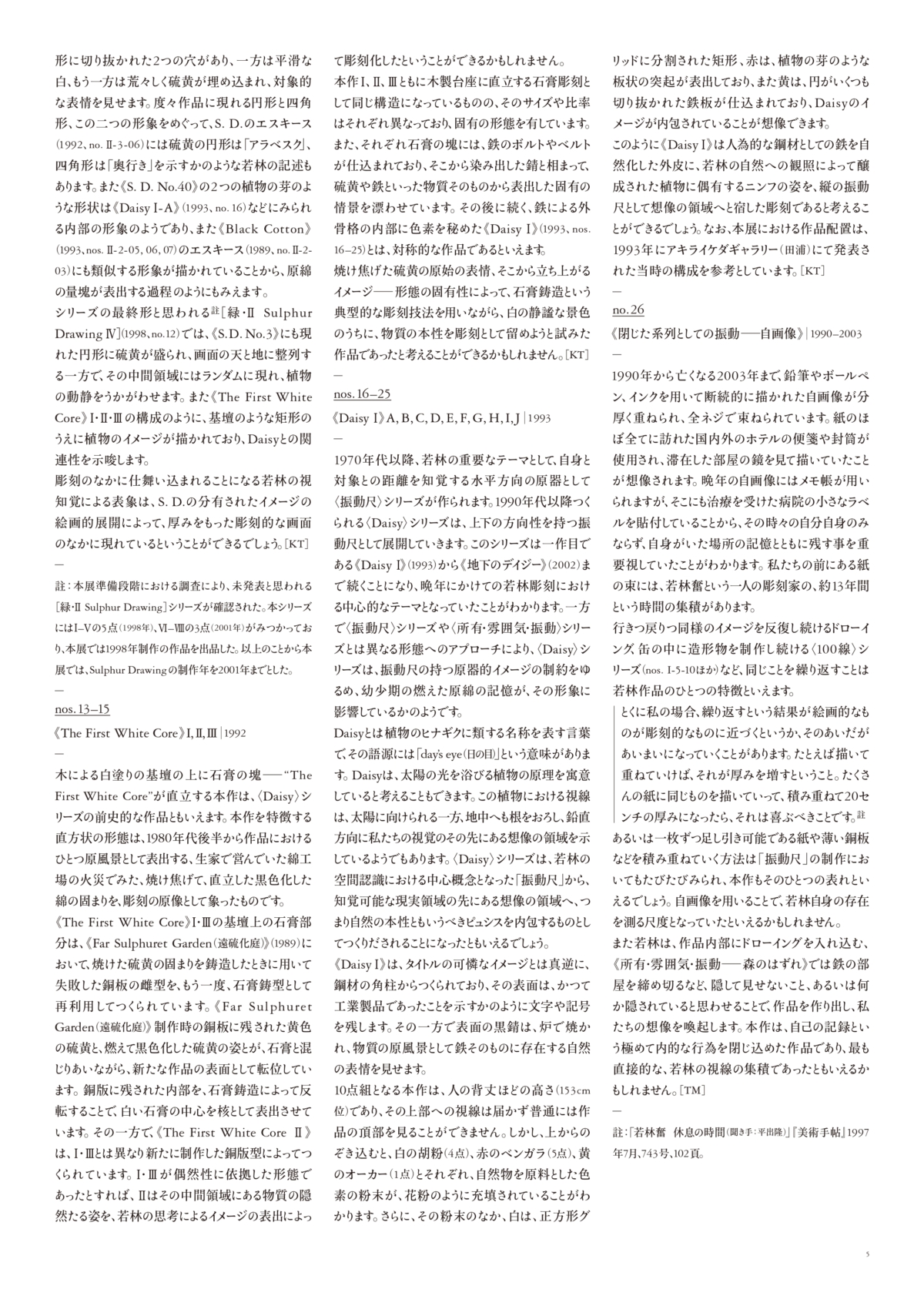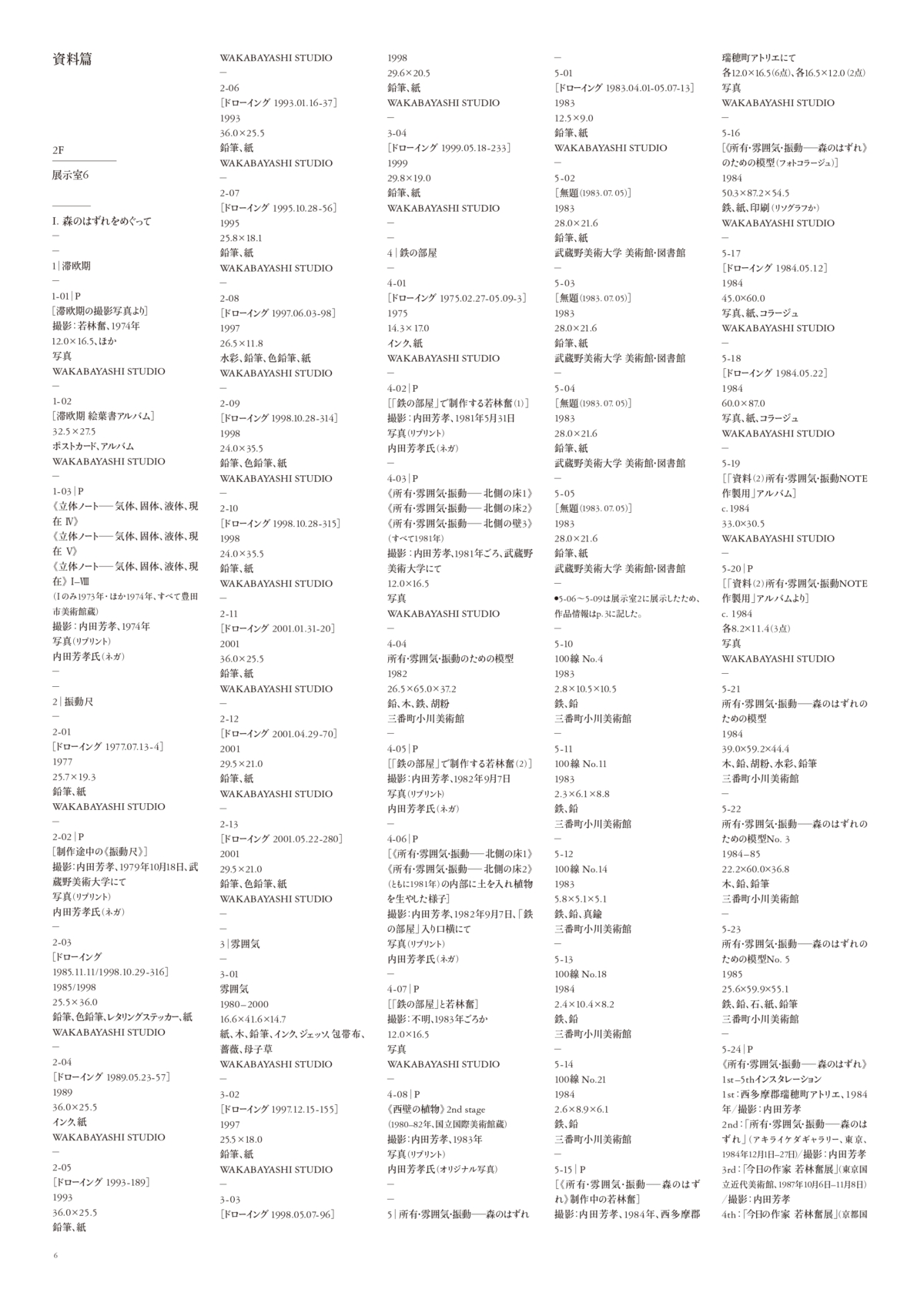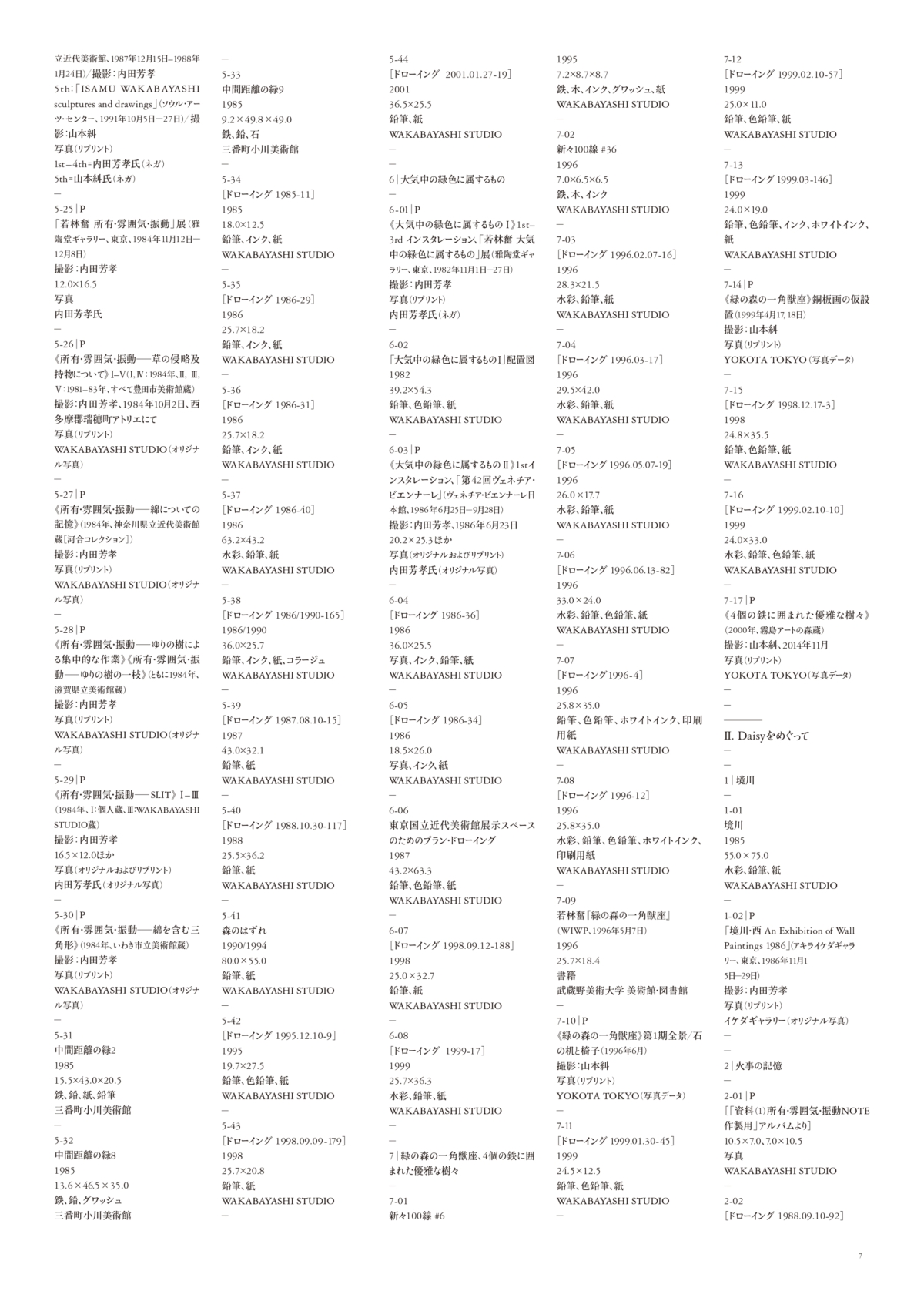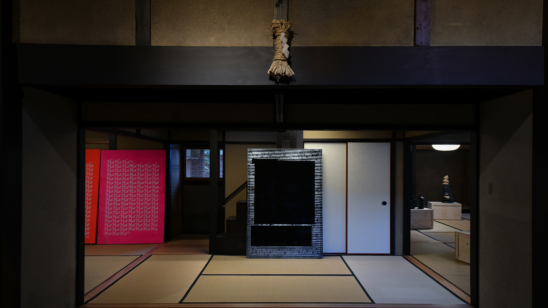Isamu Wakabayashi: Outskirts of the Forest
Isamu Wakabayashi led post-war Japanese sculpture with works backed by multiple layers of thought, and left a significant mark in contemporary art (1936-2003). His sculptures, which at first glance appear taciturn and inorganic, contain deep inside them the universal and intangible phenomena that surround us, such as nature, space, time, distance, surfaces, and boundaries. They also speak of many things which we should consider and face up to in regard to the relationship between ourselves and the world around us.
During his stay in Europe from 1973 to 1974, Wakabayashi encountered geological strata, plants, animals, weather, and the like – things which would be condensed into landscapes and backgrounds, so to speak – in the cave ruins from the Paleolithic period, which he visited many times. Based on this experience, he began to pay more attention to the space within objects, the periphery between objects, and so on, rather than the objects themselves.
From 1975 to 1984, a few months after returning to Japan from Europe, Wakabayashi began to teach at the Musashino Art University Sculpture Laboratory Open to All Majors. During his tenure, he created many important works in consideration of the fundamental question of “What is Sculpture?”, from the “Oscillating Scale”, a concept which endured until his later years, to the <Possession, Atmosphere, Oscillation: Outskirts of a Forest> series.
In 1981, Wakabayashi created himself a space of about 10 tatami mats, commonly known as the “Iron Room”, by placing iron plates in the workshop on campus. He went back and forth between the inside of this room and the outside, continuing to contemplate and create. He then went on to cover the periphery of the “Iron Room” with lead, and to place lead plates and cubes representing plants and the atmosphere around it. This work was presented as <Possession, Atmosphere, Oscillation: Outskirts of a Forest> (1981-1984). It was an extension of the concept of the “Oscillating Scale,” which was a measure of the distance between oneself and an object, and was an attempt to perceive an area as a space spreading out vertically and horizontally. For the first time in about 30 years, this extremely important work, which served as the impetus for Wakabayashi to expand his views on sculpture, will be on display.
Additionally, the “Daisy” series, which was similarly born through an exhaustive observation of nature, is a sculpture which prompts the viewer to imagine the structure of the plant itself, with the basic form of a prism which extends to above-ground or underground. While both works take their cues from nature, the approach to sculptural form is different from the <Possession, Atmosphere, Oscillation: Outskirts of a Forest> series, and represents another important development in Wakabayashi’s sculptures.
In this exhibition, a total of 10 pieces and sculptures from 2 lineages, <Possession, Atmosphere, Oscillation: Outskirts of a Forest> and <Daisy I> (1993), the first work in the <Daisy> series, will be installed in a series of spaces of the museum. Furthermore, by exhibiting sculptures, drawings, and small pieces serving as clues for a reconsideration of the two works, we will attempt to decode the various aspects of “nature”, which can be said to be the core of Wakabayashi’s sculptures.
How did Wakabayashi, who once said “I wanted to know for certain that I was a part of nature”, perceive the world, and how did he sculpt the intangible things, concepts, and contradictions he found there? Here at Musashino, where Wakabayashi contemplated “on the outskirts of the forest,” we will reconsider the significance of Wakabayashi’s sculptures.
- Artist
- Isamu Wakabayashi
- Organized By
- Musashino Art University Museum & Library
- Overseen By
- HAKAMATA Kyotaro(Professor of Painting, College of Art and Design, Musashino Art University), ITO Makoto(Professor of Sculpture, College of Art and Design, Musashino Art University), TODA Yusuke(Professor of Sculpture Laboratory Open to All Majors, Musashino Art University)
- Subsidized By
- Japan Arts Council
- Special Collaboration
- WAKABAYASHI STUDIO
Photo by : YAMAMOTO Tadasu
